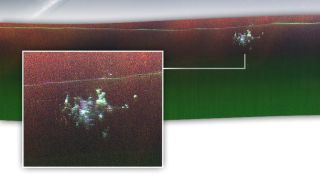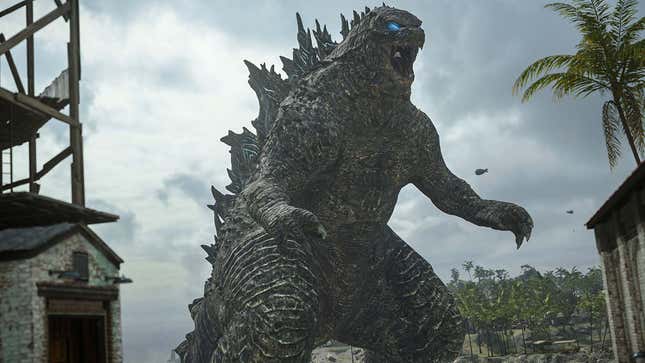ZikG/Shutterstock
The hamburger-and-fries model is one of the most enduringly beloved and omnipresent styles of fast food. Dozens of massive chains have made fortunes by giving people what they want — a fried or grilled beef patty (or two, or three), stuck between a bouncy bun and topped with cheese, onions, lettuce, tomatoes, pickles, and such. But across the board, a hamburger is always going to be pretty much the same thing. In the highly competitive burger world, chains have to do whatever it takes to make their take on the classic sandwich stand out from and rise above the others. Many focus on providing customers with an excellent, flavorful patty.
Advertisement
What makes a premium, superior fast food beef slab? It may come from a higher grade of cattle, processed with as little extra chemical help and fillers as possible — and maybe even a quality guarantee from a regulatory agency. What makes a terrible hamburger patty? Not paying much mind to any of those factors, to just get the burgers to its thousands of outlets as quickly and efficiently as possible.
With all that to consider, here’s a look at the biggest, most famous, and most popular fast food chains, and which ones use demonstrably excellent beef, and which ones utilize the second-tier stuff or worse.
Low: Jack in the Box
Birch Photographer/Shutterstock
With one of the most varied menus in fast food, Jack in the Box, the fast food chain everyone visits at midnight, sells a lot of beef, via the meaty slurry that fills its tacos as well as in its hamburgers like the Jumbo Jack, Ultimate Cheeseburger, and Sourdough Jack. The chain moves a lot of chicken, too, in the form of nuggets, strips, and sandwich protein, and Jack in the Box has committed to avoiding and eliminating the use of antibiotics in its poultry products. In 2016, the company promised to do away with non-medically important use of antibiotics in its chicken within four years’ time.
Advertisement
As for the beef, Jack in the Box has remained curiously silent. It’s hard to say what’s in the burgers if the chain won’t talk about the beef supply chain, or how its meat is processed, or what goes into it, if anything, besides pure beef. One could expect the worst, or that Jack in the Box is hiding something. A scouring of its ingredients list reveals that Jack in the Box uses two kinds of patties in its sandwiches. The smaller “Beef Hamburger Patty,” used in smaller burgers, consists of just “beef.” A quarter-pound “Signature” patty, used in larger and premium burgers, is anything but 100% beef. It’s loaded with fillers, chemicals, and modifiers including salt, yeast extract, maltodextrin, sugar, corn starch, and hydrogenated cottonseed oil, as well as the vague “spice” and “natural flavors.”
Advertisement
High: Wendy’s
Deutschlandreform/Shutterstock
Wendy’s Old Fashioned Hamburgers is so proud of its beef that it uses a testament to its quality as a marketing slogan: “Fresh, never frozen.” The patties used in the lineup of Wendy’s burgers, like the Jr. Cheeseburger, the Double Stack, and the Baconator, are processed and distributed to its restaurants quickly. According to Wendy’s fresh burgers taste better, with a beefier flavor profile that can get lost in patties that are frozen, then thawed. To supply its restaurants with fresh, unfrozen beef, Wendy’s sends out refrigerated trucks on thousands of runs each week, where the temperature never falls below 35 degrees. Because they can’t and won’t freeze any leftover beef, store managers take only what they think they’ll need of Wendy’s retro fast food-chain inspired square burgers.
Advertisement
The beef that arrives ready to cook was grown and processed under a system of strict standards. In 2016, Wendy’s promised to phase out antibiotics by 2030; as of 2020, a third of Wendy’s suppliers had upheld the pledge and reduced the use of the medical additive in feed to where it’s absolutely necessary. Wendy’s is the first mega-chain to agree to the Progressive Beef program, a pledge to commit to animal welfare and sustainability practices.
Low: MrBeast
Dave Kotinsky/Getty Images
With 304 million subscribers, Jimmy Donaldson, a.k.a. MrBeast, holds one of the most followed accounts on YouTube. In 2020, Donaldson extended his brand of stunts, social experiments, and charitable drives into the restaurant business, opening the first MrBeast Burger in New Jersey. The endeavor quickly spread to include 300 locations almost instantly, thanks to a streamlined method that combined a delivery-and-pickup app with contracted and compensated restaurants, or ghost kitchens, that agreed to cook the MrBeast Burger menu according to directives and specifications.
Advertisement
MrBeast Burger was at first a joint venture with ghost kitchen operator Virtual Dining Concepts. Without much central control or even oversight, the quality of MrBeast Burger varied significantly from location to location. One thing many outlets seemed to have in common: crummy hamburgers. Many people complained to MrBeast or online about burgers of “low quality” or which were utterly “inedible,” per NBC News. Embarrassed and angry, Donaldson sued Virtual Dining Concepts in July 2023, seeking to remove the company from its role as the operator behind MrBeast Burger.
High: Smashburger
Smashburger is a national chain that sells tall burgers piled high from a foundation of thick, beefy patties. (Despite the name, Smashburger doesn’t serve Oklahoma smashburgers, made by grilling thin patties atop paper-thin onions.) With more than 200 locations in the United States, Smashburger maintains a network of beef suppliers, and by opting to not use frozen beef out of a preference for fresh, it has to source its meat locally, around the country. Smashburger partners with small, family-run ranches and farms, holding them accountable for sustainable, earth-friendly cattle-raising techniques and proper treatment of the animals.
Advertisement
One of the ranches with whom Smashburger does business is the Walter Angus facility not far from its corporate headquarters in Colorado. That organization helps provide Smashburger with Certified Angus Beef, subject to 10 quality standards to ensure flavorful patties. On the other hand, and while the company doesn’t talk about an anti-antibiotics policy, it was found to use them in a study conducted by Consumer Reports.
Low: White Castle
Win Mcnamee/Getty Images
White Castle burgers have always been about quantity over quality. The venerable Midwestern chain specializes in selling bagfuls of sliders, made with very tiny, very thin burgers seemingly named because they so easily slide across a griddle atop a pile of grease of their own making.
Advertisement
On its website, White Castle claims that it uses “100% USDA beef patty” as the focus of its sliders. While that does promise that the meat does not contain any dollar-stretching, quality-compromising fillers, the USDA note doesn’t really mean anything. All beef sold and served in the United States is subject to USDA inspection, and the better stuff earns a certification or grade. White Castle doesn’t mention the grade of the beef it uses, thus shrouding its process in secrecy. It’s probably not Prime or Choice, but maybe Select.
There’s also the more subjective issue of gastrointestinal distress. Part of the reason why White Castle burgers are so wet and soggy is because cooks add a lot of water to the grill. That steaming process, in turn, can lead to stomach pain and flatulence.
Advertisement
High: Shake Shack
Scott Olson/Getty Images
Like so many other fast food places, Shake Shack sells burgers, fries, and shakes, albeit from a menu built by AI and with higher-quality ingredients. That idea starts with the beef used for its signature ShackBurger, SmokeShack, Shack Stack, and other burgers. Shake Shack notes on its menu that it only uses beef that has never been frozen during processing or distribution. The meat isn’t tainted or compromised by hormones or antibiotics, because those are purportedly banned from the feed of Shake Shack cows, which eat a vegetarian diet throughout their lives, in which they’re raised in a certifiably humane way.
Advertisement
In addition, the burgers arrive at Shake Shack after being raised, corn-finished, and processed under the eye of high-end restaurant beef supplier Pat LaFrieda. The famous butchery and distributor selects prestigious Angus cattle from small farms and prepares a custom ground beef blend made from multiple cuts, including brisket and chuck.
Low: Dairy Queen
Once primarily a spot associated with cones, sundaes, and novelties made out of soft-serve ice cream, Dairy Queen has positioned itself as a full-service hamburger-centric fast food restaurant. Playing up the former part of its “Hot Eats, Cool Treats,” marketing campaign, Dairy Queen in the 2020s serves a scaled-back lineup of five “Stackburgers,” including the spicy FlameThrower, the Backyard Bacon Ranch, and the simple two-patty Double Cheeseburger.
Advertisement
The only information Dairy Queen is willing to share on its website about the nature of their beef is that they’re “100% seasoned real beef patties.” If Dairy Queen’s beef suppliers passed muster during its USDA quality inspections, it would likely brag about getting a grade of Prime, Select, or even Choice — which suggests they didn’t, and that DQ meat is in the sub-par range. But it’s at least seasoned, with something, and likely doesn’t contain fillers. The flavor and presentation of Dairy Queen burgers follows this thread. According to critics and regular customers, all five of Dairy Queen’s burgers have the same problem — they may taste weird, and also appear colorless and offer a too-bouncy feel.
Advertisement
High: In-N-Out
Tom_young67/Getty Images
Some fast food burger chains concoct a particular mix of different beef cuts to arrive at the perfect patty. In-N-Out, the California based chain with a simple menu consisting primarily of cheeseburgers, hamburgers, and “Double Doubles” that people will wait eight hours to enjoy, is all-in on chuck roast. That’s a particularly beefy-flavored cut that comes from the upper shoulder and neck of a cow. It’s a slightly chewy cut broken down until it’s smooth and tender by grinding into ground beef and formed into patties, which In-N-Out employees perform at plants in Baldwin Park and Lathrop, California, and Dallas — meaning no facility is far from its main territories of the West Coast and Texas. It’s a company policy that a restaurant be situated within a few hundred miles of one of those plants, to maintain freshness, because burgers aren’t shipped frozen and the kitchens don’t have microwaves.
Advertisement
Those cows are USDA-certified, and are grown without the use of extra, potentially harmful ingredients. An In-N-Out hamburger patty is 100% beef, as there are no fillers or preservatives employed.
Low: Sonic
Francis Dean/Getty Images
In 2010, Sonic became one of the first fast food chains to institute animal welfare standards with its suppliers, adopting the use of eggs from cage-free chickens and pork from humane treatment-oriented facilities. While that covers the eggs and sausage used in its breakfast fare, Sonic hasn’t said much of anything about the beef that serves as the main ingredient in its burger-dominant menu. Its menu claims that the meat is a “100% pure seasoned beef patty,” with no mention of fillers or a USDA pedigree. The lack of information could mean that Sonic uses sub-optimal, treated beef for its burgers.
Advertisement
Consumer Reports and the Natural Resources Defense Council lead a team of nonprofit groups that grade national fast food chains on egregious use of antibiotics in meat, blamed in part for the rise of tough-to-kill viruses. In reports issued in 2019 and 2021, Sonic scored an F, on an A to F scale. That means the chain definitely uses antibiotics in its meat, and abundantly.
High: BurgerFi
Deutschlandreform/Shutterstock
BurgerFi, a restaurant chain open only since 2011 that’s grown into a 86-outlet operation in the Midwest and on the East Coast, is extremely proud of its antibiotic-free beef in its lineup of towering, topping-heavy burgers. The company makes mention of the lack of the growth and health-tweaking substances in the official descriptions of its products, such as the BBQ Rodeo Burger, made with “Antibiotic-Free” beef.
Advertisement
But antibiotics are just one of the things that BurgerFi doesn’t use. It’s enrolled in a beef quality and welfare program called “Never-Ever.” Cattle raised for beef production are done so without the use of steroids, growth hormones, and various other chemicals. Those cows eat a plant-based diet, and they reportedly enjoy a healthier, free-range environment. Even apart from all those stipulations, BurgerFi’s beef is decidedly high end, as the chain serves up burgers made with the kind of meat one might find at a nice steakhouse — those burgers come from select Black Angus cows. BurgerFi says that just 1% of United States beef fits its stringent criteria.
Low: Burger King
Justin Sullivan/Getty Images
The second-largest burger chain in the United States by number of outlets, Burger King does high volume business on the lower end of the price spectrum. Between value menu offerings, discounted combo meals, and bundle purchases, Burger King sells burgers on the cheap, and so it needs to keep down its beef costs.
Advertisement
According to its website, Burger King uses patties made completely from real beef, meaning no preservatives, additives, or fillers. Unlike some higher-end burger purveyors, Burger King doesn’t use its website to discuss the country of origin of its beef, or the farming practices used, or its USDA grade. This probably means that Burger King doesn’t want to reveal potentially unsavory information, like how it has to freeze its beef so it can remain usable from a long journey from overseas farms or processors — and that it doesn’t come from the most elite cattle with sustainability in mind. In 2019, for example, Burger King beef supplier Marfrig was discovered to have raised cattle illegally on improperly deforested, protected land in the Amazon River basin of South America.
Advertisement
High: Mooyah
Less than 20 years old, Mooyah is a relatively new player on the burger landscape. The 80-unit chain differentiated itself from other hamburger restaurants by taking a creative approach to protein. In addition to alternatives like turkey and black beans, Mooyah still serves beef patties, but top-quality stuff. The meat in a Mooyah burger comes to each restaurant fresh, having never been frozen, made from Certified Angus Beef. Angus cattle are bred to provide beef with prominent marbling, in which the natural fat in the meat winds through the muscle like waves or ribbons, melting and mixing as the meat is grilled.
Advertisement
The chain claims that its beef is held to a higher standard than the top USDA rankings of Prime and Choice, having met 10 scientific benchmarks denoting quality. Of every 10 Black Angus cows, only three pass the tests that allow it to enter the Mooyah distribution system.
Low: McDonald’s
Lauren Decicca/Getty Images
As the no. 1 domestic fast food restaurant, McDonald’s has an immense impact on the United States economy. But as opposed to some of its competitors, who commit to serving beef that’s never been frozen, promising a superior level of quality and taste, McDonald’s readily admits on its website that it freezes its all-beef burgers — which the chain dubiously claims actually enhances the taste by preserving the freshness. “Flash freezing is when beef is quickly frozen to seal in fresh flavor,” McDonald’s asserts, before mentioning that the trip from a processing facility, where the meat is ground and pressed into a patty, takes two or three weeks. Then, once they’re in the restaurant, McDonald’s cooks those patties nearly continuously, to meet the elevated level of customer demand and to get orders out the door as quickly as possible. Only the quarter-pound patties reserved for the Quarter Pounder with Cheese are cooked individually, on demand.
Advertisement
As far as who is flash-freezing those millions of pounds of meat a year, McDonald’s gets its beef from a company called OSI Group, which quietly supplies protein for high-volume producers, like Chipotle and Oscar Meyer. McDonald’s promises a burger free of fillers, and while it’s in the process of removing antibiotics from its chicken, the chain hasn’t said much about whether or not those substances are used in its beef, which it claims is being raised more and more in environmentally sustainable ways.










